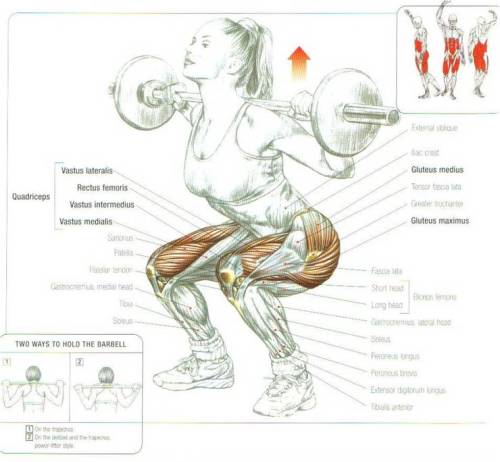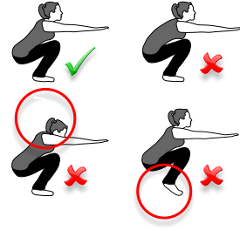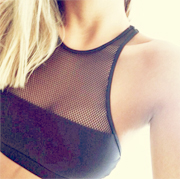How to squat with proper technique
date: 2012-11-17  time: 14:18:00
time: 14:18:00
 time: 14:18:00
time: 14:18:00 If you are working out in the gym and could only do one exercise it would be the squat. Why? Because no other exercise challenges the human body to operate as a single unit like the squat. The squat has long been heralded as the “King of Exercises” – and quite rightly so. Whether you’re doing it with weight on your back or all bodyweight, proper form is key. I found this article on squat form, and I thought it was written well, even if it is more towards squatting with a bar.

Benefits of squatting
One of the biggest misconceptions about the squat is that it is a leg exercise. The squat is in fact a full body exercise. Every muscle in your body is challenged when you squat. The legs and hips push the weight up, the abs and lower back back tense to stabilise your back, and the arms are used to pin the bar onto the back (or help with balance in the case of bodyweight squats).
- Squats Build Muscle – Squats build muscle throughout your entire body faster than any other exercise. Squatting is a compound exercise that stresses your entire body as a complete unit. The stress put on your body by squats triggers a hormonal release of testosterone in your body. This elevated testosterone aids in producing muscle at a faster rate.
- Squats improve your athleticism – If you want to become a better athlete no other exercise will improve your overall athleticism like the squat. Squatting helps you build explosive strength that carries over to most competitive sports.
- Squats reduces injuries – Contrary to popular belief, squats do not cause injury (when performed correctly). Performing squats with proper form actually reduces the chance of injuring oneself. Why? Because squatting improves and maintains hip flexibility. Additionally, squats improve the stability of your knees, when using proper squat form.

Why you need proper squat form
Quite frankly, most people have no idea how use squat with correct form. In fact, I would estimate that 9/10 people I see squatting today are doing so with extremely poor from. This is a problem for 3 reasons:
- It is dangerous – While squatting with proper form is completely safe, squatting with poor form is extremely dangerous. Incorrect squat technique put a lot of stain on the lower back and knees and can quickly lead to serious injury.
- You are seriously compromising the benefits of squatting - When you don’t squat with proper form it completely defeats the purpose of squatting in the first place. Increased muscle, elevated testosterone, improved vertical leap – forget about it.
- You look like a complete idiot - To someone who knows how to squat properly there is nothing more pathetic than someone loading the bar up with a ton of weight than not squatting with proper form. Learn how to control your ego and do it right.

How to squat
The squat setup
- Approach the rack with the bar at approximately mid-chest height.
- Move under the bar and place it on your back. Hold the bar in place with your hands.
- Stand with and even stance. Your feet should be shoulder width apart with your feet facing out at a 30 degree angle.
- Lift the bar out of the rack and take ONLY one step back. Take a big breath. Tense your entire body. Squat.
Squatting down
- Start from the hips – Bend at your hips and sit back into the squat. Imagine you are sitting down on a seat. The hips joint should always bend before your knees.
- Check your knees – Keep your knees out. Your knee joints should be pointing in the same direction as your feet all the way down. If your knee buckle in it normally means that the weight is too heavy.
- Keep your weight back – Keep your weight distributed towards your heel.
- Go all the way down – You should always aim to squat to at least parallel. Meaning, your hip joint needs to be at least parallel with your knee joint. This is incredibly difficult to judge yourself, even with the aid of a mirror. Ask someone else to assess your depth either in the gym or by video taping.
- Think about squatting up - On the way down think about squatting up. This will help to prepare your brain and make the upward movement easier.
Squatting up
- Bounce off the bottom – At the bottom position of the squat your hip muscles should be tight – storing energy. Use this energy to help you bounce out of the bottom of the squat. Ensure that you are bouncing off the hips – not the knees.
- Focus on your glutes – When powering up out of the squat concentrate on squeezing your glutes together.
- Drive your hips up – Most of the power for the squat comes from the hips. Drive the hips in an upward motion.
Racking the bar
- Step forward. Ensure that your bar is over the pins before lowering the weight.







